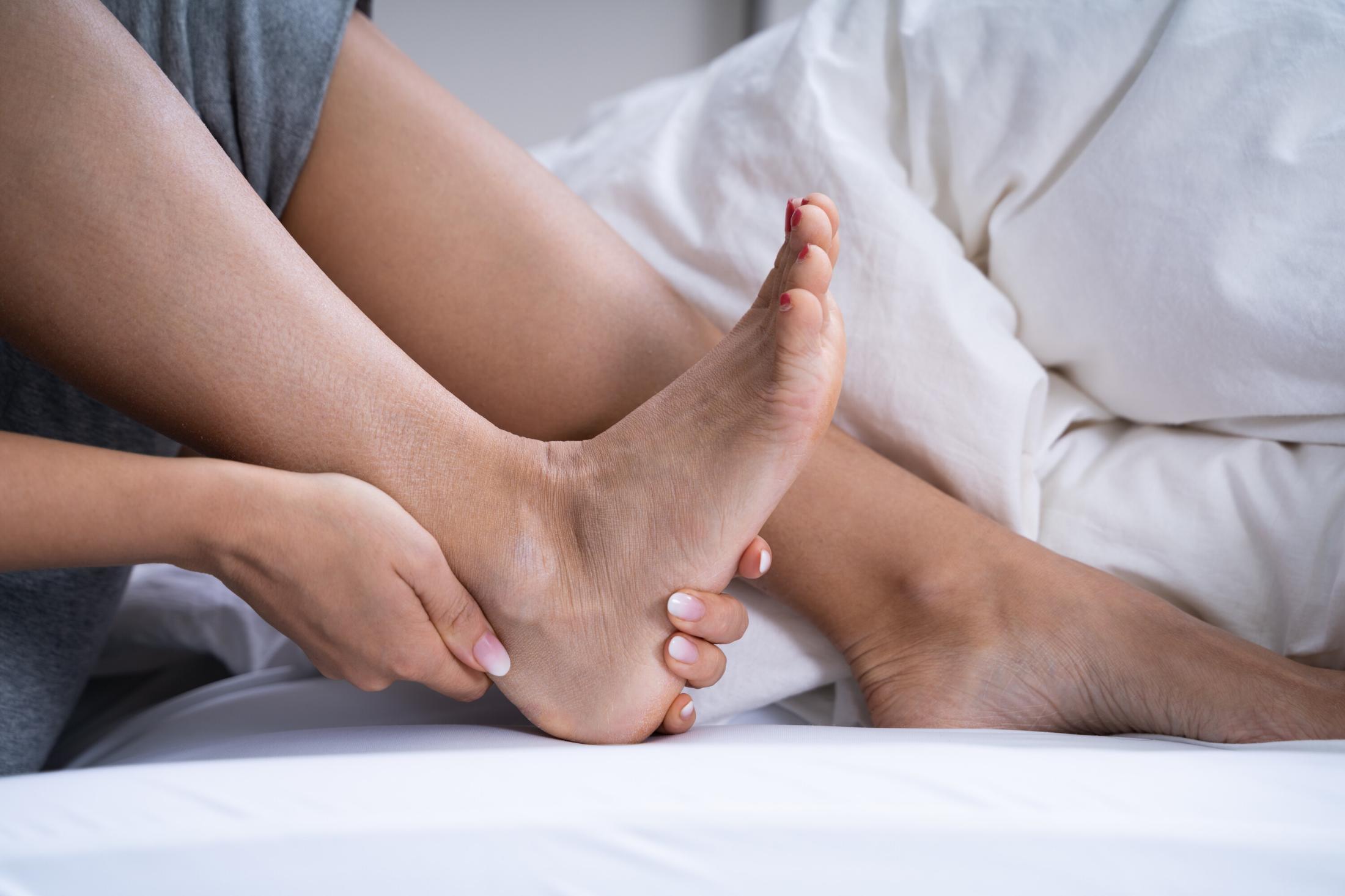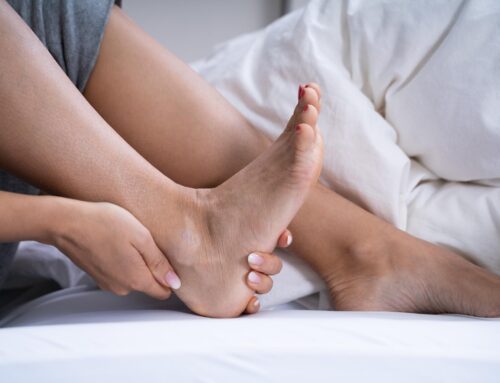We rely on our feet and ankles every day, whether we’re standing for long hours, walking, exercising, or simply going about daily routines. Taking care of them is important to staying comfortable and active. Ankle compression socks provide a simple yet effective way to support your ankles by improving circulation, reducing swelling, and offering light stability.
Whether you’re managing mild swelling, recovering from an injury, or looking to prevent fatigue after long days on your feet, ankle compression socks can be a valuable addition to your routine.
Reasons to Try Ankle Compression Socks
We ask a lot of our feet and ankles every day, yet they’re often an afterthought when it comes to care. Ankle compression socks are a simple way to give them extra support, whether you’re dealing with swelling, fatigue, or just want to stay comfortable.
Unlike regular socks, they’re designed to help improve circulation and reduce discomfort—making them a practical choice for many different needs.
Improved Blood Circulation
Ankle compression socks are designed to gently encourage better blood flow in the lower legs and ankles. By applying light, consistent pressure, they help push blood back toward the heart, reducing the chance of it pooling around the ankles. This boost in circulation can help lower the risk of swelling, discomfort, and heaviness that often comes from sitting or standing for long periods.
Better circulation doesn’t just ease discomfort, it also supports the overall health of your legs, keeping them feeling energized and reducing the chances of related issues over time.
Reduced Swelling and Fatigue
Swollen, tired ankles can make even simple tasks feel uncomfortable. Whether caused by a long day on your feet, travel, or certain health conditions, swelling can slow you down. Ankle compression socks help by applying steady, gentle pressure that keeps swelling in check and reduces that heavy, achy feeling.
Wearing them regularly can help you feel more comfortable and supported, whether you’re working long shifts, exploring the city, or recovering from activity. They’re a small addition to your routine that can make a noticeable difference in how your ankles feel at the end of the day.
Enhanced Performance
If you’re active or athletic, you know how important it is to protect your muscles and joints while moving. Ankle compression socks offer extra support by stabilizing the ankle and reducing muscle vibration during activities like running, cycling, or gym workouts. This added support can help reduce muscle fatigue and keep you feeling stronger for longer.
Not only can they help you perform at your best, but they may also promote faster recovery by improving circulation and reducing post-exercise swelling. They’re a practical tool for both your workout and your recovery routine.
Injury Prevention
Staying active also means staying mindful of injury risks. Ankle compression socks provide light, targeted support that can help protect the ankle joint and surrounding muscles from strains or overuse injuries. By offering gentle stabilization, they may lower the chances of rolling an ankle or aggravating a weak spot.
Whether you’re exercising, walking on uneven terrain, or simply moving through a busy day, that extra layer of support can give you confidence and peace of mind—helping you stay active and avoid setbacks.
What Makes Ankle Compression Socks So Effective
Ankle compression socks work by applying gentle, targeted pressure to support circulation and reduce swelling in the lower legs. These specially designed socks use a technique called graduated compression, where the tightest pressure is focused around the ankle and gradually lessens as it moves up the leg toward the calf. This pressure pattern follows the natural flow of blood in the body, helping it return toward the heart more efficiently.
By applying this steady pressure, ankle compression socks help prevent blood from pooling around the ankles, a common issue that can lead to swelling, discomfort, and that heavy, achy feeling after standing or sitting for long periods. This improved circulation not only helps reduce swelling but also supports better oxygen delivery to the muscles and tissues.
In addition to boosting circulation, the compression helps limit the buildup of excess fluid in the tissues by reducing the space where fluid can collect. This makes ankle compression socks a useful tool for managing mild swelling from various causes, whether related to long workdays, travel, or certain health conditions.
With regular wear, ankle compression socks can make a noticeable difference in how your legs and feet feel at the end of the day—helping to relieve tiredness, reduce swelling, and promote overall foot and leg health. They’re a simple, practical way to support your lower limbs through daily activities or recovery.
Choosing the Right Ankle Compression Socks
Compression socks have gained prominence as a versatile accessory that not only offers comfort but also provides essential support to our feet. With a variety of options available, finding the right pair that aligns with your needs can be a daunting task.
Compression Levels
Ankle compression socks come in different compression levels, each serving distinct purposes. These levels are typically measured in millimeters of mercury (mmHg).
- Mild (8-15 mmHg): Ideal for everyday wear, helping prevent minor swelling and discomfort.
- Moderate (15-20 mmHg): Provides more substantial support, suitable for relieving fatigue and mild swelling.
- Firm (20-30 mmHg): Recommended for those with moderate swelling, varicose veins, or recovering from certain conditions.
- Medical (30-40 mmHg or higher): Prescribed by healthcare professionals for severe conditions, post-surgery recovery, or chronic venous issues.
Material and Breathability
The choice of material will help determine the comfort and breathability of compression ankle socks. It’s recommended to seek out socks meticulously crafted from moisture-wicking fabrics, such as nylon, spandex, or a thoughtful blend of materials designed to provide optimal breathability.
Size and Fit
Achieving the right size and fit is important for effectiveness. Consult the manufacturer’s sizing chart and measure your ankle and calf circumference accurately. A snug fit ensures that the compression is distributed optimally, providing the intended benefits without discomfort or constriction.
Style and Design
Ankle compression socks come in a range of styles and designs to suit various preferences. From basic neutrals to vibrant colours and patterns, there’s something for everyone. Whether you’re looking for a discreet option to wear under your clothing or a bold statement piece, you’ll find ankle compression socks that align with your style.
How to Wear Ankle Compression Socks
Wearing ankle compression socks properly is key to making sure they work as intended and feel comfortable throughout the day. Taking a few extra moments to put them on and take them off the right way can help maintain their effectiveness and extend their lifespan.
Putting On Ankle Compression Socks
- Choose the Right Size
Finding the right fit is essential for both comfort and effectiveness. Use the sizing guide provided by the brand to measure your ankle and foot, and don’t hesitate to ask for professional advice if you’re unsure. - Put Them On in the Morning
It’s easiest to wear compression socks first thing in the morning, when swelling is at its lowest. This allows them to fit more easily and helps prevent swelling as the day goes on. - Prep the Sock
Turn the sock inside out up to the heel, so the toe section stays right-side out. This makes it easier to position your foot without stretching the fabric too much. - Slide Your Foot In
Place your toes into the toe section and gently pull the sock over your heel. Take your time to make sure your foot is fully seated inside. - Unroll Gradually
Slowly roll the sock up over your ankle and lower leg, smoothing the fabric as you go. Avoid tugging or pulling too hard—this can damage the material or affect the compression level. - Check Alignment
Make sure the heel section of the sock is properly lined up with your heel, and that the ankle support is sitting snugly around your ankle without twisting. - Smooth Out Wrinkles
Any folds or bunching can create pressure points or discomfort. Run your hands over the sock to flatten any creases and ensure even compression.
Taking Off Ankle Compression Socks
- Roll Them Down
Gently roll the sock down from the top toward your ankle, instead of pulling it straight off. This helps avoid overstretching the fabric. - Peel Off Slowly
Once at the ankle, carefully peel the sock off your foot, turning it inside out as you remove it. - Take Your Time
Don’t rush—removing compression socks gently protects the material and keeps them fitting well over time. - Repeat for the Other Foot
Follow the same steps for the second sock if you’re wearing a pair.
Tips for Easier Application
If you find compression socks tricky to put on, try these helpful tips:
- Wearing rubber gloves can give you a better grip to pull the sock up without damaging it.
- Lightly applying lotion or talcum powder to your legs can help the fabric slide more smoothly over the skin.
- Sitting down while putting on or removing the socks can make the process easier and safer, especially if you have balance concerns.
Taking a little extra care with your ankle compression socks ensures that they deliver the right level of support and compression. With proper use, they can help improve circulation, manage swelling, and keep your ankles feeling more comfortable throughout the day
Caring for Ankle Compression Socks
Caring for your compression socks is essential to maintain their quality and prolong their durability. Below are some tips to ensure your socks remain effective and comfortable:
Washing Instructions
- Always refer to the washing instructions provided by the manufacturer. Different materials may require specific care methods.
- It’s recommended to hand wash your compression socks in lukewarm water with a mild detergent. Avoid using harsh chemicals or bleach.
- Gently rub the fabric between your palms to remove dirt or sweat. Avoid excessive scrubbing or wringing, as it can damage the elasticity of the fabric.
- Rinse the socks thoroughly to ensure all detergent is removed.
Drying and Storing
- After washing, lay the socks flat on a clean towel to air dry. Avoid using direct heat sources like radiators or tumble dryers, as high temperatures can damage the fabric.
- Keep the socks away from direct sunlight, as UV rays can degrade the elastic fibers over time.
- Store your compression socks in a clean, dry place. Avoid folding them in a way that causes unnecessary stress on the fabric.
Maintaining Elasticity
If you possess multiple pairs of compression socks, practice rotating their usage. This approach prevents overstretching and preserves their elasticity for prolonged effectiveness.
The elastic fibers within compression socks may gradually lose their optimal performance. If you observe reduced compression or notice signs of wear and tear, it’s a clear indication that it’s time to replace them.
Whether you’re an athlete, someone who spends extended hours on their feet, or simply someone looking to elevate their foot health, incorporating compression socks into your daily routine can be a significant step toward achieving these goals.
Discover the range of compression socks and stockings available at Care-Med to experience the benefits of improved comfort and support.
Share This Story, Choose Your Platform!
Table of Contents
We specialize in orthotics, body braces, and compression wear tailored to your unique needs in Toronto. Reach out to us at info@caremed.care or call 416-782-5353 to book your fitting and consultation.
Experience the difference of customized solutions designed just for you.











